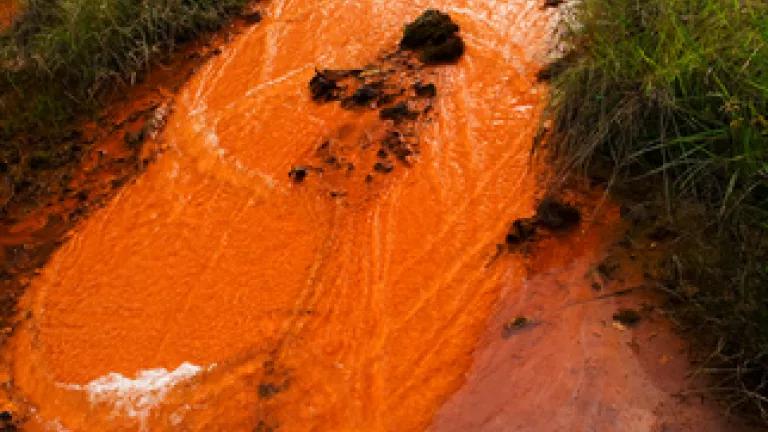
In case you missed it, Time magazine recently published a story (March 12) spotlighting the battle in West Virginia over mountaintop removal coal mining.
This excerpt sets the tone for the piece:
Some three million pounds of explosives are detonated each day in West Virginia for coal mining, according to the U.S. Geological Survey, and the process shears up to 800 feet of elevation off each mountain peak, says Margaret Palmer, director of the University of Maryland's Center for Environmental Science. The black scars run visibly up the spine of the central Appalachians. And the explosions don't sound lightly: "When they put these blasts off, it's horrendous," says Maria Gunnoe, 41, of the community advocacy group Ohio Valley Environmental Coalition, who lives in Bob White, W. Va., 12 miles north of Lindytown. Tremors from the blasts shake houses from the ground up, and it rains sand, coal dust and other particles in surrounding areas, residents say.
Another excerpt:
Mountaintop mining destroys the natural habitats of many local species, whether endangered ones such as flying squirrels or flourishing ones like salamanders. Further, mountaintop debris that is dug up or displaced by explosions is dumped in the valleys below, burying headwater streams, killing the aquatic species that live in the waters and impacting downstream water supplies. About 1,200 miles of streams have been buried in this manner in central Appalachia, according to a 2003 federal study.
That last figure is outdated, by the way. During the last two decades, nearly 2,000 miles of Appalachian streams have been buried by debris from mountaintop mining operations, which blast off the tops of mountains to get at the coal seams below. Although it may seem counterintuitive, the blasting of Appalachia's mountains and clearcutting of the forests pale in comparison to the extensive damage done to the region's waterways.
An analysis of water tested downstream from mountaintop removal mining operations in Appalachia shows high levels of toxins, with some samples testing 50 times the U.S. safety guidelines, according to a report by the U.S. Environmental Protection Agency (EPA). The independent analysis of previously unreleased data suggests that 14 of 17 sites tested in West Virginia and Kentucky in 2007 and 2009 exceed federal standards for toxins such as arsenic, lead, mercury, and chromium. Six of nine West Virginia sites tested above safe levels for toxins and all eight Kentucky sites exceeded that level, with two sites registering extremely high readings. The data, which was not available publicly until requested under the federal Freedom of Information Act by environmental groups, was analyzed by toxicologist Carys Mitchelmore at the University of Maryland Center for Environmental Science.
“This is the first-line red flag,” Mitchelmore told the Charleston Gazette. “This is the best way to show what the whole toxicity of that pollution is.”
(Photo of WV stream contamination by J. Henry Fair)

